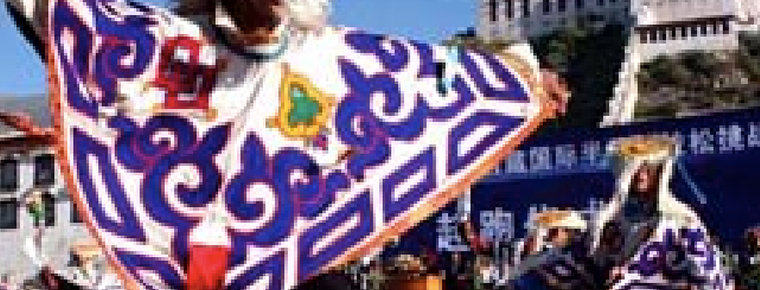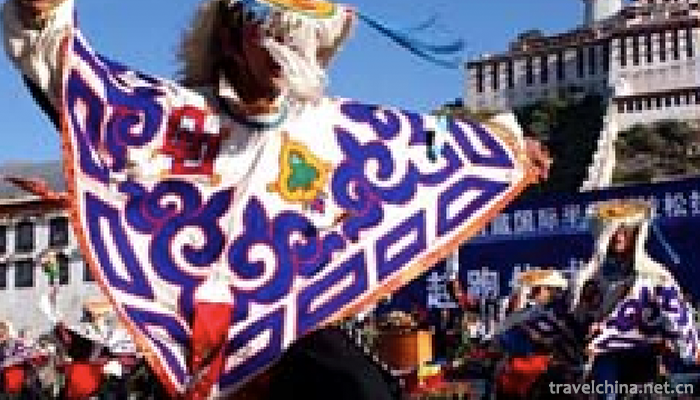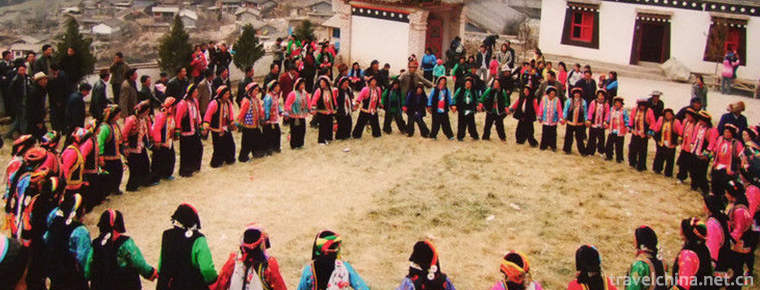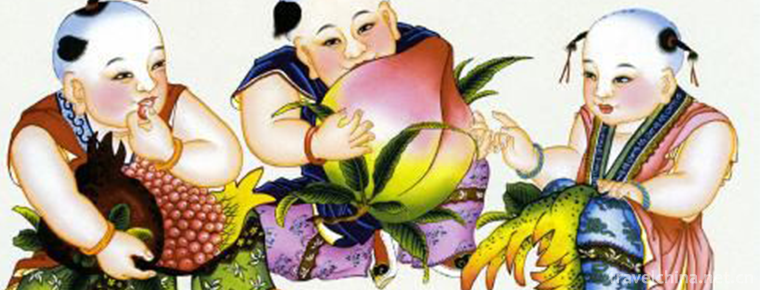2019-04-28

- By ChinaWiki.net
- Chinese Edition
- 2019-07-06
Harmonic Qin
In the history of Harmonious Qin, young men and women in Nima Township, Bango County, Naqu Prefecture, Tibet had a tradition of gathering to dance Harmonious Qin. Whether it was the end of farming or the holidays, herdsmen danced freely on the vast grasslands and let their boots strike echoes on the ground. It is a masterpiece of the fifth Panchen Chan in his childhood. Its performance forms are very rich. It uses various body languages and singing tunes to express the actions of sheep when they eat grass. It also compares them to beautiful things in life, such as flowers, plants and trees. It makes the dull sheep herding life lively, lively and interesting.
On June 7, 2008, Xieqin was listed in the second batch of national intangible cultural heritage list with the approval of the State Council.
Historical Evolution
Tubu Gatschin originated in 1855 , and was founded by the eighth Panchen Dan Beiwangqiu. It has a history of more than 150 years. Tubu Jiaqin is a combination of singing and dancing. "Harmony" in Tibetan means singing and dancing, while "Qin" means grand occasion or grandeur. Tubu Jiaqin is a folk song and dance performed on grand or grand celebration occasions, such as inviting living Buddhas and upper classes. Whether religious festivals or folk festivals, Harmonious Qin is an indispensable form of activity, and also a self-entertaining collective singing and dancing art with strong participation.
Tibetan culture and art has a long history. The vast territory, abundant resources and peculiar scenery of Shiga are a treasure land bred on the ancient and magnificent plateau land. Since ancient times, it has been a place where ethnic minorities live in large numbers. It has a rich accumulation of ethnic cultures because of the collision and blending of various cultures. The Xigaze area can be said to be the origin of Xiqin. Tubu Jiaqin was born and formed in the long-standing folk dances in the back Tibet area. With the wide spread of Tibetan Buddhist culture, Tubu Jiaqin inherited the form of local folk singing and dancing art, and was deeply influenced by multi-cultures, and produced variations. Tubugaqin originated in 1855 and was founded by the eighth Panchen Danbeiwangqiu. It is a kind of folk ceremonial dance with the accompaniment of the original singing, which is popular in Nanmulin County of Shigaze area.
Stylistic features
Singing and Dancing Situation
Ancient ritual forms of singing and dancing, which are popular in Lhasa, Shannan and Ali of Tibet, are often sung during grand festivals or ceremonies. The first and last songs are called "Harmonious Fruit" (introduction) and "Zhaxi" (auspicious). Each song and dance is composed of Adagio and adagio, or adagio, mid-board and adagio. The music is simple and enthusiastic. The lyrics include the origin of human beings, historical legends, praises and blessings, etc.
Performing Form
Harmonious Qin is an art form of singing and dancing performed in grand or grand celebrations. It has a long history, rich connotation, and strong local characteristics. This form of performance is very popular in Tibet, especially in Houzang. In the long process of inheritance and development, it has formed a singing and dancing performing art with unique local characteristics.
Inheritance Significance
Xieqin, also known as Xiejiuqin (meaning the tenth day of the Tibetan calendar), is said to have 25 lyrics written by the eighth Panchen Danbeiwangqiu. Tubugaqin was a kind of folk dance performed by Panchen Chan in the past dynasties when they went to Zhashlenbu Monastery in Xidi to hold grand greeting activities along the way. It is performed at a ceremonial event at a given time and place to wish good luck, good wishes, good weather and good harvest. It has unique local characteristics and performance style, rich lyrics, simple and honest melody, warm and orderly rhythm, and solemn and elegant performance form.

Ask a Question
Your email address will not be published.



0 Questions